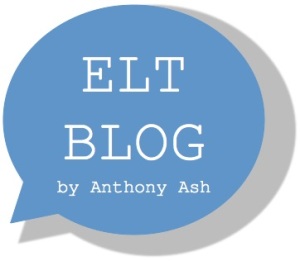When you’re learning a new language, authentic materials can be quite scary and off-putting. While this is true for all skills, such as reading a newspaper or trying to maintain a conversation with a native speaker, it’s particularly true when it comes to listening. When turning your ear to an authentic radio programme, TV episode or eaves dropping on a conversation in a café, it can be so hard to make heads or tails of what’s being said.
This is because listening is live: the words are spoken and then are gone again in a split second. You don’t have the option to go back and look at the words again, like in reading, or check that you’ve understood it correctly, like in speaking. Listening happens in real-time and you’ve got to get it the first time, otherwise you might not get it right at all.
Listening is a challenge for language learners of all levels. However, where higher level learners can manage to understand a lot of what they hear, lower level learners are lucky if they can pick out a word or two from what must seem like a sea of noise.
Listening isn’t easy for lower levels, which is why we often use specially-made materials for these levels. Such materials often take the form of dumbed down texts, with high frequency words, clear pronunciation and a slow pace. Of course, the pedagogical justification for this can be found in theories of learning, such as Vygotsky’s Zone of Proximal Development.
However, despite the methodologically sound reasons for simplifying listening texts, is there any justification for exposing lower level learners to authentic listening materials? Keep reading to find out…
Why use authentic materials?
There’s a wide range of reasons for using authentic materials, but the number one reason has to be the fact that they expose learners to real language from the very beginning. Learners need to become acquainted with the sound, rhythm and tone of both the written and spoken language. How can they be expected to do this if all they ever hear is an artificially simplified version of the language?
What’s more, listening texts can be used as springboard to further learning, just like reading texts. As when learners quiz new words and structures they come cross in written texts, they can also do this with spoken texts. However, listening materials designed for Second Language Acquisition often only use high frequency words and structures, which lower level learners might already be well acquainted with. This means they lose out on numerous learning opportunities, though this can be easily avoided by using authentic recordings for listening practice.
What’s the point if you can’t understand it?
Language teachers and learners often see language learning as being communicative: we read a newspaper article to then talk about it; we write a letter of complaint because we want to express our dissatisfaction; we listen to a friend’s stories from their holidays to be entertained. Taking this approach to listening means the vast majority of what is being said needs to be understood. This is another justification for using inauthentic materials.
However, listening is a skill and we have to remember that skills development is independent to language and communication. It’s possible to practise the subskills involved in listening, as well as reading, writing and speaking, without actually understanding anything.
For example, imagine you want your learners to improve their skimming and scanning subskills in reading, so you give them a text and tell them to find 10 words specified by you. They might not even know what the 10 words mean, but they can find them in the text.
The same approach can be applied to vocabulary in listening texts. Get learners to listen to an authentic listening text and ask them to listen out for words they know. I’m currently learning a language and I’ve only had a few lessons. The other day I listened to a radio morning show in the language and, of course, I didn’t understand anything but there were seven words I was able to pick out in the five minutes I listened. Seven words after only a few lessons is impressive. Imagine how many words and phrases your A2 level learners could pick out?
What’s good about this activity is that it actually gives the learners encouragement and confidence, especially if they manage to pick out a word they’ve only ever seen written down and never heard.
This matching of sounds to words is very important and it’s something which is often underpractised. It’s important for all learners, even higher level learners, to be able to match the lexis they have in their minds to the actual way they sound when produced in authentic speech.
Give it a go
You might not be convinced by the end of this post, but give it a go, experiment and see if any of your learners find it useful. You might have to help them to understand that there is a difference between Communicative Language Practice, where you do need to understand what’s being said, and Skills Development. Try to get them on board and show them the potential benefits.
You could also try this out yourself as a teacher and a language learner. Many of you will be learning a foreign language yourself, so turn on the radio and see if you can pick out any words of phrases, or if you’re at a higher level what about words or phrases you didn’t realise you knew or understood.
If you do try any of this out, we’d love to hear from you about how it went. Feel free to leave us a comment below.

I always use authentic material in my language class
Actually that is how I hv developed my listening skills of the language.It surely helps…initially they face problems and fond it boring bt as they do it consistently they gain a lot from it…
LikeLike
I agree with everything in here, although there is a need for balance. Often, though, rather than having a weirdly stunted dialogue one could shorten a recording in order to reduce the cognitive load. Teacher talk is also great for learners to listen to. Your readers (or you) might want to check out John Field’s Listening In The Language Classroom and/or Michael Rost’s Teaching and Researching Listening.
LikeLiked by 1 person
Teacher talk – something I totally missed out here! That’s a really good point 🙂
LikeLiked by 1 person